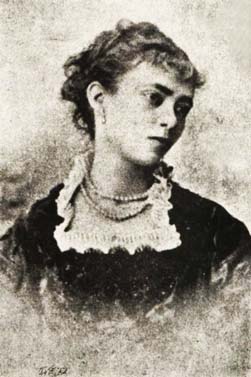3.8.2 The poetic work of Mercedes Matamoros (1851 – 1906)

Mercedes Matamoros used the pseudonym Ofelia to enclose her verses and was dubbed “The Blind Lark” by her contemporaries. Orphaned from her mother in early childhood, she received a thorough education from her father, which included the study of the world’s major languages. She wrote articles on costumbrismo (traditional art) in the publications El Siglo, El Occidente, La Opinión, El Triunfo, El Almendares, and Revista de Cuba, among others. Her fundamental contributions are associated with poetry, where the sonnet “La muerte del esclavo” (The Death of the Slave) stands out:
“Through hunger and thirst and deep terror,
From the mountain tangled in the thicket,
He finally fell into the dark shadow
The miserable persecuted servant.
He still hears the barking in the distance
Of the mastiff, sniffing on the plain,
And even in the arms of death it lasts
The crack of the cracking whip.
More of his body of the stiff mass
My moving voice will not be raised
To tell him: -Lazarus, wake up!-
Athlete of pain, rest at last!
He who lives in death never cries,
And it is better to die than to be a slave.”
This poem is one of the finest narrative and lyrical pieces devoted to the subject of slavery in the period before the wars in the 19th century. His sensitivity reflected this and other burning issues. He wrote a poem entitled “On the Death of Martí” and another about “The Reconcentrated” which, in addition to their intrinsic literary value, offer an interesting account of this bloody episode in Cuban history.
Sensual themes, even those veiled as homoerotic, were present in her poetry, placing her at the forefront of Hispanic American female poetry. Her work, “The Last Love of Sappho,” was a scandal in its time; some verses are illustrative considering the emotional tone of the era: “My body is made of lily and rose, / and on the morbid breast the neck bends languidly like a lily / and is there still someone who says I am not beautiful? / Oh, come! And in this love that gives me to you, / you will be Pleasure and I will be Delirium!”
Her poetry doesn’t strictly fit into any movement, but moves between classicism, romanticism, and modernism, with a distinct voice that eludes mimesis. Her eroticism even surpasses the tone and terms used by male poets, with an unprejudiced originality that later Cuban female poetry hasn’t always achieved, evident in her poem “The Beast.”
The author was not only feminist in her poetry but also expressed very valid criteria regarding, in a general sense, the hypocrisy of sexual morality, which young women violated in their reading and customs. She vindicated the carnality vilified by many modernist poets, heirs of Casal not only in terms of aesthetic conceptions. She also indulged in a certain pessimistic attitude and developed similar ideological and thematic lines, but based on a poetics rooted in Romanticism. She would occupy the avant-garde both politically and lyrically.
Regarding her place in Cuban literature, Roberto Manzano says: “Entering the fire of history as well as that of individual passion, Mercedes Matamoros always offers us authentic poetry. Her definitive hierarchy has yet to be established, but there is already abundant consensus about her greatness, at least among the poets and scholars who assiduously visit our tradition. She became more refined over the years, and with each passing year, she became increasingly bolder. She knew that everything was changing, and her genius advanced in the multiple intricacies of sensitivity. When she died, she found herself at the very threshold of a new world.”








